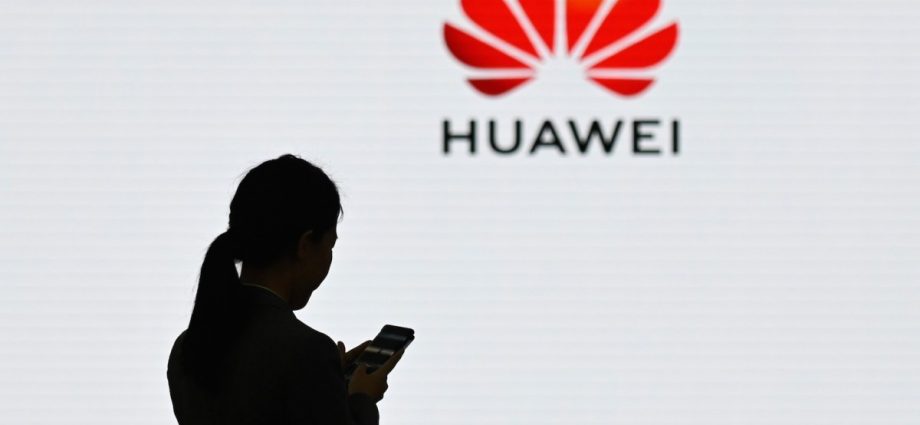HiSilicon, a fabless semiconductor unit of China’s Huawei Technologies, has used up all its smartphone chipset inventory with no clear source of new supplies as Taiwanese fabs are no longer allowed to produce chips for it under US sanctions.
The Shenzhen-based firm has seen its global smartphone chipset market share fall to zero in the third quarter from 0.4% in the second quarter, meaning that it has depleted all of its inventory, according to Counterpoint Research, a hardware consultancy firm.
Without high-end processors, Huawei can no longer produce 5G-capable phones but still make 4G models for African and Latin American markets by sourcing lower-end chips not covered by US sanctions from Qualcomm and Tsinghua Unigroup’s UNISOC, analysts said.
Huawei has previously suggested that it could use new technology that stacks two chips together to replenish its high-end chips.
Some columnists speculated that Huawei could have successfully applied a new chip stacking technology, first suggested by the company’s rotating chairman Guo Ping in late 2020, that combines two chips into a faster one. That would be similar to what TSMC has done for Apple by stacking two M1 Max chips into a M1 Ultra chip.
Other writers, however, commented that Huawei would not likely be able to obtain 5G chips or parts in the short run and that while a stacked processor might be faster, it would not be suitable for use in smartphones due to its bulky size and high energy consumption.
In May 2019, the US Commerce Department put Huawei and its 70 affiliates on its so-called Entity List on national security grounds. In response to the restrictions, Huawei started using inventory chips plus self-developed Kirin chipsets to maintain its smartphone output. It also boosted the output of Honor, its smartphone brand at that time.
On September 15, 2020, Taiwan’s TSMC stopped producing Kirin chips, resulting in a countdown for HiSilicon’s chip inventory. In November 2020, Huawei had to dispose of its entire stake in Honor in November 2020 so that the unit could obtain foreign-made chips.
In the fourth quarter of 2020, Huawei slowed its smartphone production as its market share was being squeezed by rivals including Oppo and Vivo.

Richard Yu, chief executive of Huawei Technologies Consumer Business Group, said in late May this year that Huawei’s businesses had been severely hit by the US sanctions. The company’s net margin fell to 5% in the first six months of this year from 9.8% a year ago, he acknowledged.
“Based on our checks and sell-thru data, Huawei has finished the inventory for the HiSilicon chipsets,” Counterpoint said in a report on December 15. “It is also not possible for the brand to obtain newer chipsets from TSMC, Samsung, etc because of the trade ban.”
HiSilicon’s smartphone application processor (AP) global market share peaked at 16% in the second quarter of 2020, but had fallen to 3% and 1% in the same period of 2021 and 2022, respectively.
As of the third quarter of this year, Mediatek, Qualcomm and Apple were the top three smartphone chipset makers, followed by China’s UNISOC with a 10% market share.
A Caixin article published in April 2020 said UNISOC had hired several senior executives from Huawei despite its parent Unigroup’s worsening financial situation.
Another article published in August last year said UNISOC hired many former Huawei executives in hope of achieving technological breakthroughs and alleviating the “ka bozi” or “strangulation” problems caused by US sanctions.
UNISOC said in January this year that its revenue grew 78% year-on-year to 11.7 billion yuan, thanks to strong growth in its chip design services. The company was described by Taiwanese media as a “fish that escaped the net,” in reference to the company’s ability to elude US sanctions.
On November 29, UNISOC launched its latest 5G smartphone processor known as T820, which uses 6-nanometer (nm) chips.

A Jiangsu-based technology writer said the T820 had a competitive advantage in the mid-and high-end smartphone markets, although it was less advanced than the 4nm chip designed by Mediatek and Qualcomm.
However, he added that Huawei would not be able to use the T820 chip, which was built with US-made ARM architecture. Last year, UNISOC launched two chips called T616 and T606, which were reportedly tailor-made for Huawei to produce 4G phones.
Over the past two months, Huawei executive Yu has on several occasions stressed that the company would make a strong return to smartphone markets in 2023, though without elaborating on its plan for doing so without a clear source of 5G chips and equipment.
Read: Huawei’s profits collapse as US sanctions bite
Follow Jeff Pao on Twitter at @jeffpao3

